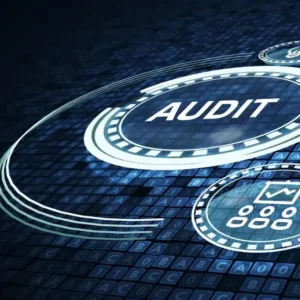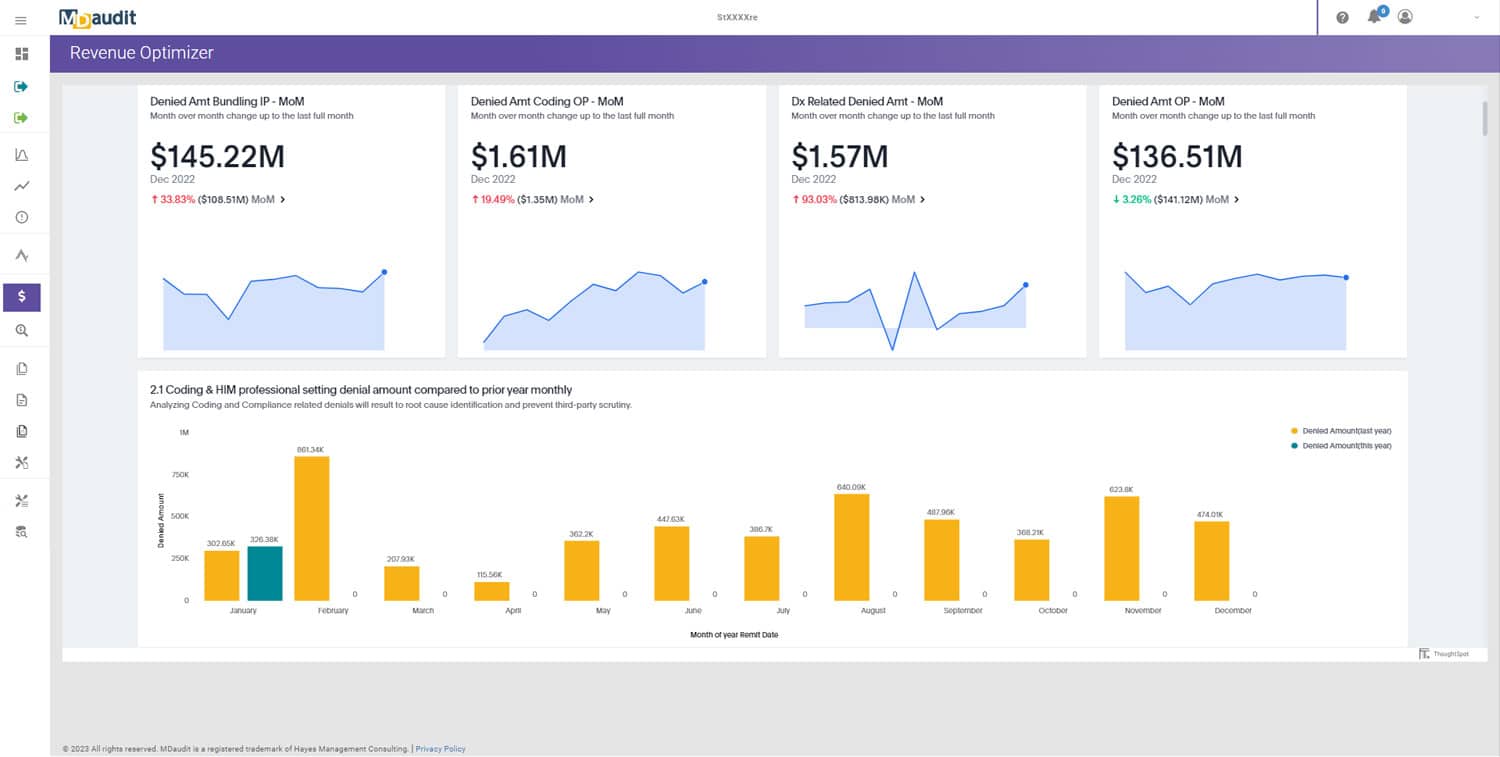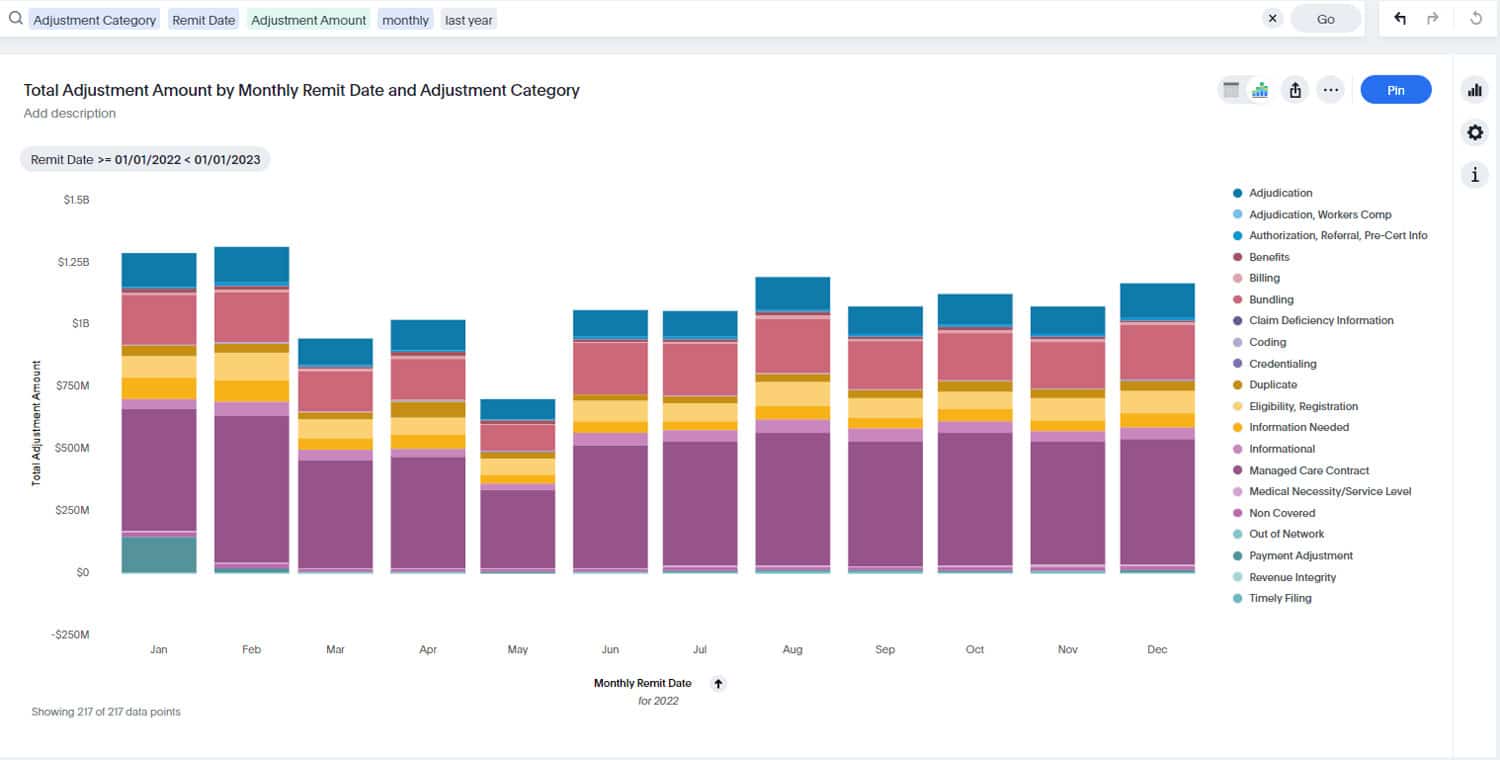Healthcare compliance operates in a high-stakes environment where even minor lapses can result in significant fines, revenue loss, and reputation damage. With over 600 legal and regulatory requirements governing patient safety, privacy, billing, and care quality, healthcare organizations face immense pressure to maintain compliance.
The Office of Inspector General (OIG) emphasizes that ongoing evaluation through audits is “critical to a successful compliance program,” urging organizations to continuously review their operations. However, conducting internal audits manually can be resource-intensive, especially when healthcare compliance teams are already stretched thin.
Key challenges facing healthcare compliance teams today:
- 85% of healthcare organizations reported shortages in allied health staff in 2022, including coding, billing, and compliance roles
- Backlogs in billing, clinical documentation, internal audits, and denial management are putting hospital margins “in the red”
- Government and commercial payers are intensifying external audits to recover improper payments
- The U.S. Department of Justice collected over $1.7 billion in healthcare fraud recoveries in fiscal year 2022
For compliance professionals, proactive internal auditing is no longer optional, it’s essential for regulatory compliance and financial stability. Fortunately, technology is transforming how internal audits are conducted, with audit workflow automation emerging as a game-changer for healthcare compliance teams.
The Case for Automation in Healthcare Compliance Audits
The traditional approach to internal compliance audits involves manual selection of records, combing through documentation, checking for errors, compiling findings in spreadsheets, and creating reports. This manual workflow is labor-intensive, prone to human error, and struggles to keep pace with healthcare data volume and constant regulatory updates.
Forward-thinking healthcare organizations are turning to audit workflow automation to address these challenges. According to industry experts, automating parts of the audit process can “decrease errors and omissions, allow for continuous monitoring, create transparency through a comprehensive audit trail, and maintain HIPAA compliance”.
Importantly, automation doesn’t remove the human element from compliance, it enhances it. A well-designed internal audit software platform can gather and analyze data quickly, presenting auditors with risk-based insights that allow them to focus on interpretation and corrective actions rather than clerical work.
What is Audit Workflow Automation in Healthcare?
Audit workflow automation uses digital tools and software to streamline each phase of the audit process, from planning and sample selection to documentation review, reporting, and follow-up. In healthcare settings, these tools often integrate with electronic health records (EHRs), billing systems, and coding databases.
Key capabilities of automated audit workflow tools include:
1. Data Integration
Automated platforms consolidate data from multiple sources, patient records, billing claims, coding databases, remittance and denial data, into one view. This unified data access is crucial for effective audits, providing a “single source of truth” for compliance analysis.
2. Rule-Based Analysis
Automation allows organizations to codify auditing rules and criteria into the software, which then automatically flags records or claims that violate those rules. This consistent application of standards improves fairness and consistency across all audits.
3. Sampling and Scheduling
Instead of manual selection, automated systems can randomly select records for scheduled audits or target specific samples based on risk criteria. The system can also automatically schedule audits at regular intervals, ensuring timely reviews without manual oversight.
4. Workflow and Collaboration
Modern audit software includes workflow management that assigns tasks to auditors, tracks progress, and enables collaboration. This ensures nothing falls through the cracks, each audit is logged, tracked, and completed with a clear audit trail.
5. Reporting and Continuous Monitoring
Automated platforms generate immediate reports showing error rates, high-risk findings, and improvement trends. Many platforms offer continuous compliance monitoring with real-time dashboards that scan incoming billing data and alert teams to issues as they occur.
Benefits of Automating Internal Audits in Healthcare
Adopting audit workflow automation yields significant advantages for compliance and revenue cycle teams:
1. Improved Accuracy and Consistency
Automated audit tools reduce human error by applying standardized rules to every record. They maintain detailed audit trails of all actions and findings, ensuring reliable and objective results while simplifying compliance reporting.
2. Greater Efficiency and Productivity
Automation accelerates data gathering and performs initial analysis instantly. This efficiency allows smaller teams to cover more ground, crucial in an industry facing staff shortages. Automation provides “repeatable audit testing” that can be reused, freeing auditors to focus on root causes and staff education.
3. Risk-Based Focus
Automated platforms enable risk-based auditing by using data analytics to identify outliers and high-risk scenarios. This ensures resources are deployed where they matter most. Risk-based audits increased by 28% in 2022 compared to the previous year, reflecting the need to proactively target emerging problem areas.
4. Better Regulatory Alignment
Audit automation tools can be updated with new rules as they’re released, ensuring internal audits remain aligned with the latest compliance standards. This continuous compliance monitoring approach provides ongoing assurance of regulatory alignment.
5. Enhanced Revenue Integrity
Automating audits directly supports revenue integrity by catching billing errors, insufficient documentation, or coding mistakes that would lead to denied claims or payer takebacks. This proactive stance helps “retain hard-earned revenue and reduce compliance risks through data-driven decision making”.
6. Reduced Administrative Burden and Cost
Automating internal audits centralizes information in one platform, reducing duplication of work and confusion. This streamlining translates into cost savings by allowing existing audit staff to handle more volume or by reallocating staff time to other critical compliance initiatives.
Use Cases: Automating Different Types of Audits
1. Scheduled Audits
Automated workflow tools handle scheduling and execution of routine audits seamlessly. The software automatically pulls required samples, assigns them to auditors, and sends email reminders when audits are due. Templates and checklists ensure uniform criteria, while automated reporting shows compliance rates and trends over time.
2. Risk-Based Audits
Advanced audit platforms employ data analytics and machine learning to continuously analyze billing and coding data for anomalies. For example, the system might monitor E&M coding levels across physicians and flag those whose patterns deviate significantly. MDaudit’s approach exemplifies this by “leveraging advanced analytics, machine learning, and automation” to “identify irregularities as they occur”.
3. Denial Audits
Automation simplifies denial audits by aggregating denial data and pinpointing trends. An audit platform might integrate with the billing system to gather all incoming denial codes and reasons, categorize denials, and compute metrics like denial rates by department or physician. This turns denial management from a reactive process into a proactive continuous audit process, directly supporting revenue integrity.
MDaudit’s Unified Platform for Audit Workflow Automation
MDaudit demonstrates what a modern audit automation platform can achieve for healthcare compliance. It “unifies billing compliance, coding, and revenue integrity in a single platform supporting all auditing types”, breaking down silos so stakeholders can work from the same data and collaborate via one system.
Key features of MDaudit include:
1. All-in-One Audit Workflows
MDaudit supports every major audit type within one platform. This comprehensive coverage eliminates the need for separate tools or spreadsheets, improving productivity and oversight.
2. Continuous Risk-Based Monitoring
The platform offers real-time dashboards and alerts that align with a risk-based auditing philosophy. Its use of predictive analytics “anticipates potential risks and provides actionable insights”], enabling organizations to implement preventive measures before minor issues become major violations.
3. Efficiency Through Automation and AI
MDaudit leverages automation to reduce manual workloads and integrates with EHRs and billing systems for automated data gathering. Its AI-driven tools ( AI Assist and SmartScan.ai) use artificial intelligence to answer natural language questions and automate aspects of external audit response workflow.
4. Billing Compliance and Revenue Integrity Focus
The platform maintains a dual focus on compliance and revenue, providing tools for both billing compliance and revenue integrity. Its Revenue Integrity Suite can analyze remittance data and predict denial risk, closing the loop between auditing and revenue cycle.
5. Proven Results and Continuous Improvement
MDaudit is used by over 70 of the top 100 US health systems, indicating its credibility in handling complex compliance needs. The platform’s analytics serve as an early warning system, allowing organizations to quickly adjust internal audit focus in response to industry trends.
Strategies for Implementing Audit Workflow Automation
For healthcare leaders looking to introduce audit workflow automation, consider these strategic steps:
1. Assess Current Processes and Identify Gaps
Begin with a thorough review of existing internal audit processes. Map out how audits are currently conducted and identify pain points. Quantify metrics like average time spent per audit or error rates to establish a baseline for measuring improvement.
2. Secure Leadership Buy-In
Present the case for automation to senior leadership by linking it to both compliance risk mitigation and financial ROI. Remind them that regulators like OIG expect continuous auditing and monitoring as part of effective compliance.
3. Choose the Right Automation Platform
When evaluating audit software, consider factors like:
- Scope and integration with existing systems
- Analytics and reporting capabilities
- User experience and learning curve
- Vendor support and regulatory updates
- Security compliance and data protection features
4. Start with a Pilot and Phased Rollout
Implement the new audit automation tool in a controlled pilot before full deployment. Track metrics closely and gather user feedback, then gradually expand to other departments or audit types as confidence grows.
5. Train the Team and Adjust Workflows
Invest in comprehensive training for audit and compliance staff. Update internal audit (standard operating procedures) SOPs to reflect new automated processes and encourage a mindset shift, auditors are evolving from data gatherers to data interpreters.
6. Monitor, Refine, and Expand
Continuously monitor the impact of audit automation. Use the platform’s reporting to track trends and solicit regular feedback from users and stakeholders. Refine system configuration as needed and consider expanding automation to adjacent areas as you mature.
Driving Better Compliance Through Automation
In today’s healthcare landscape, defined by tightening regulations, financial pressures, and rapid data growth, automating internal audits has become essential. Automated tools bring a new level of rigor and scope to internal auditing, enabling continuous compliance monitoring, facilitating risk-based auditing, and safeguarding revenue integrity while easing administrative burdens.
Organizations that have implemented audit automation already see benefits: faster audit cycles, more comprehensive coverage, and early warning of compliance issues before they escalate. They’re better positioned to avoid large payer paybacks or fraud investigations because their internal checks catch problems first.
For healthcare entities still considering automation, remember that the compliance burden isn’t getting lighter, and the margin for error continues to shrink. Automating internal audits is no longer a leap of faith, it’s a practical, evidence-based approach that aligns with industry best practices and OIG recommendations.
By leveraging the right tools and approaches, healthcare organizations can transform their audit programs into proactive guardians of compliance and revenue, achieving better outcomes and delivering higher quality care with confidence.
Ready to simplify your data and supercharge your compliance strategy? Schedule a demo of AI Assist today and see how AI-driven insights can empower your team to make smarter decisions faster. Or explore the full MDaudit platform capabilities and learn how we can help your billing compliance and revenue cycle team.






